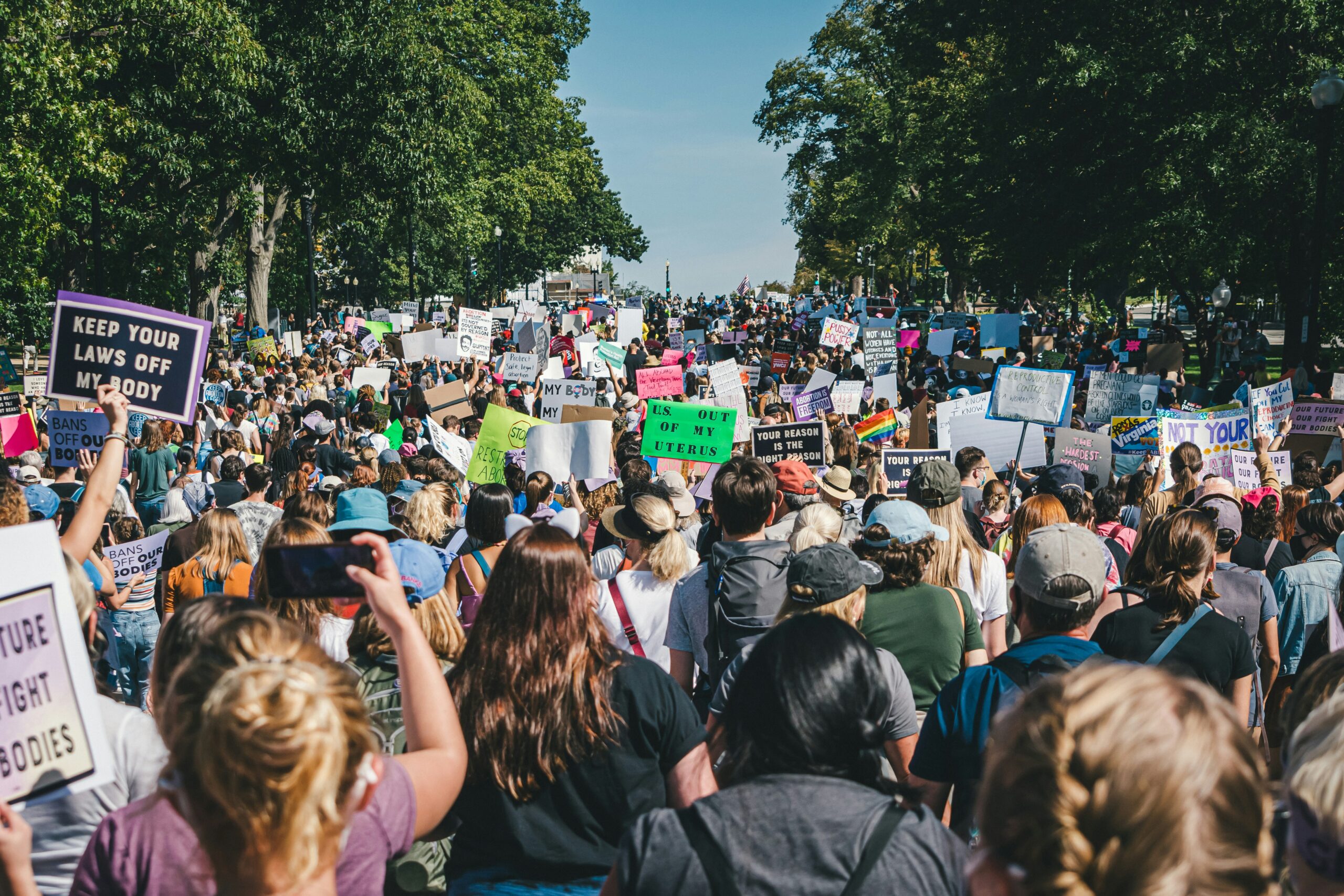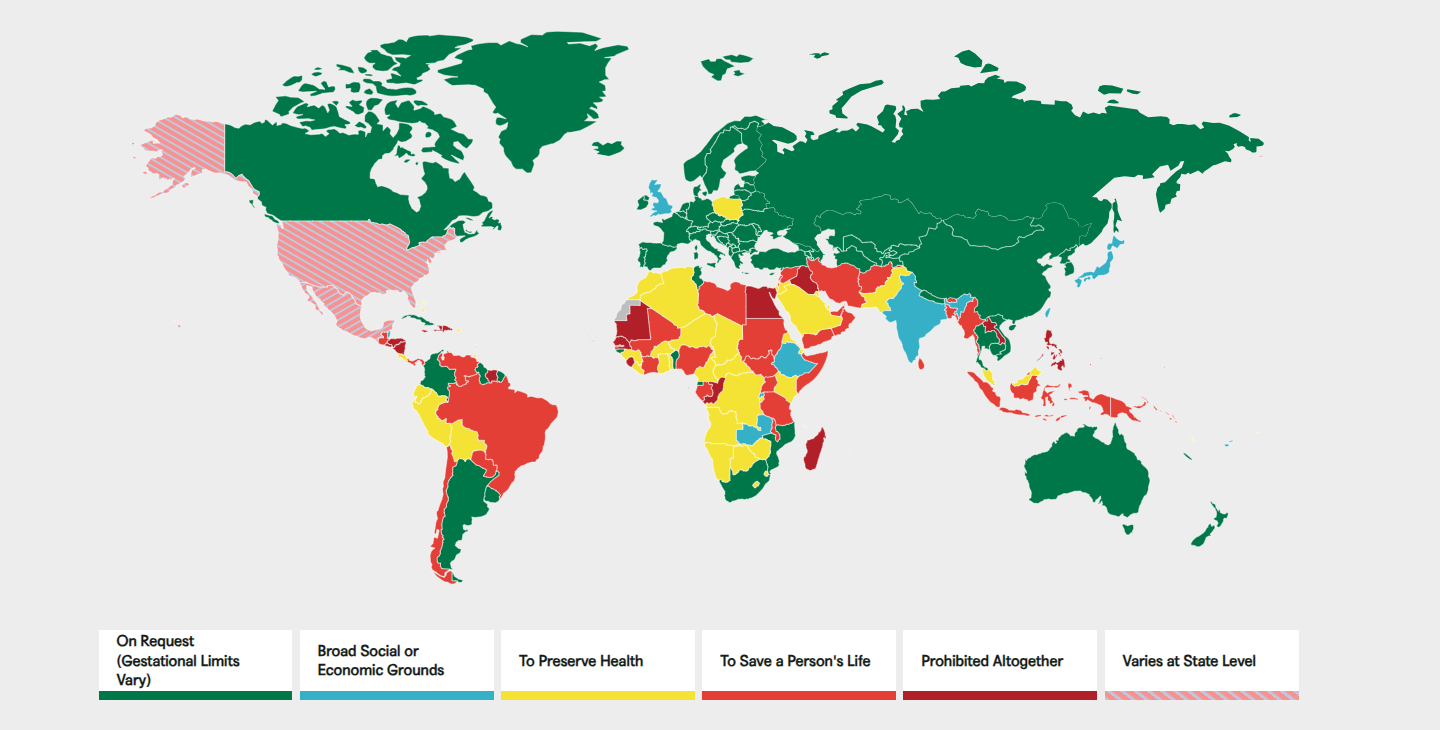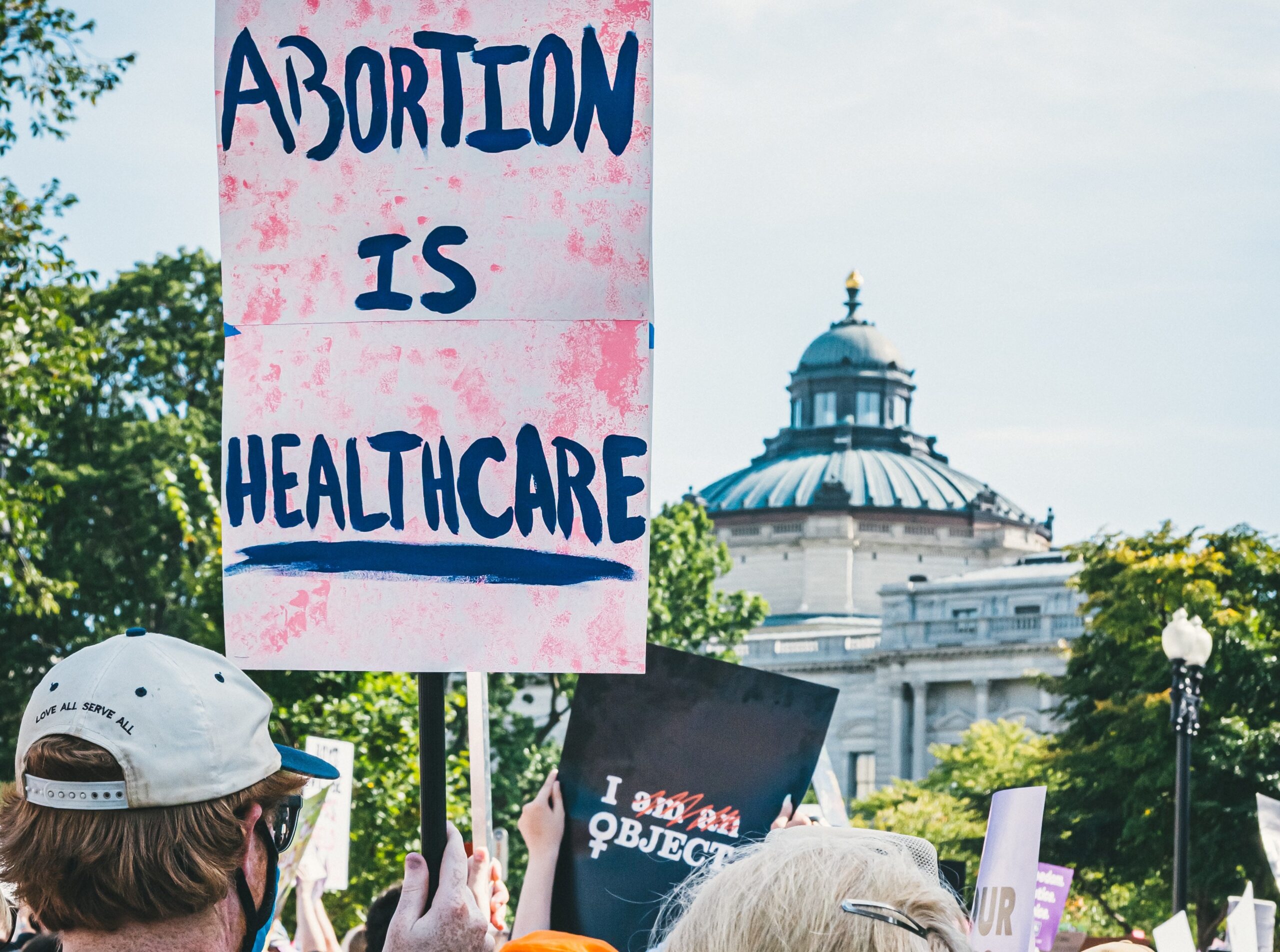
Abortion access: blocked paths and rights of way
Positive news can sometimes feel in short supply, but France enshrining abortion access into their constitution earlier this month was a genuine moment to celebrate. We thought we’d take the opportunity to look at the general abortion access picture across the world.
The reality
Firstly, before we look at countries and regions that offer some optimism, it’s important to set the shocking international context. Comprehensive abortion care is included in the list of essential health care services published by the World Health Organisation (WHO) in 2020. Despite that, an estimated 257 million women globally who do not wish to get pregnant are not using safe, modern methods of contraception.
According to the United Nations Population Fund (UNFPA), nearly half of the 120 million pregnancies worldwide each year are unintended. Over 60 percent of these unplanned pregnancies end in abortion, with nearly half of all abortions being unsafe. Unsafe abortions make up somewhere between five and 13 percent of all maternal deaths.
These numbers are appalling. That’s why we monitor and report on the actions of governments seeking to undermine women’s reproductive rights as part of our Gilead Watch campaign. But there are places where the situation is brighter, abortion access is legal and often, but not always, accessible. We want to highlight some of these places to show there is precedent for change. Starting with France.
Vive la France
On the 4 March 2024, the French Government voted to enshrine abortion into their constitution through a majority vote of 780-72. Although this came 50 years after abortion was first legalised in France, this new step protects access from being revoked. France becomes the first country to explicitly guarantee abortion access in the constitution.

It’s not just lawmakers who were overwhelmingly in favour of locking down abortion access. Polls have shown that 80% of the population agree with the move, a consensus you would struggle to find on most other issues.
When tweeting about this historic event, we had some pushback from people who took issue with many headlines, including that included in our post from CNN, “France becomes world’s first country to enshrine abortion rights in constitution.” The claim was that other countries, have abortion rights included in their constitution, therefore France is not the first.
The key difference between France and other countries which allow abortion within the constitution is that the French have included it explicitly. The word abortion has been written in as a ‘guaranteed freedom’, which is not the case elsewhere.

Europe
In Europe, only five countries have restrictive laws or total bans on abortion. They are Andorra, Liechtenstein, Malta, Monaco and Poland. There is also hope that a new, more progressive, government in Poland may begin to turn the tide and improve the situation there, although the wheels of politics turn slowly.
In 2021, San Marino held a referendum where the population decided to legalise abortion on request, which was enacted last year. Ireland also held a referendum on abortion in May 2018, with a yes vote of 66 percent.
Today almost all European countries allow abortion on request or on broad social grounds, at least in the first
Center for Reproductive Rights’ European Abortion Laws Paper
trimester of pregnancy, and almost all countries also ensure that abortion is legal throughout pregnancy when
necessary to protect the health or life of a pregnant individual.”
That said, even where abortion is broadly legal, there are often barriers in place. These include mandatory waiting periods, time barriers, obligatory counselling and the right to refuse an abortion on grounds of conscience or religion.
Furthermore, in September 2022, the Hungarian government introduced a policy that forced people to listen to “foetal vital signs” before having an abortion. In Italy, soon after the Brothers of Italy party formed a coalition government in 2022 it was reported that accessing abortions was becoming increasingly difficult.
Around the globe
According to the Center for Reproductive Rights, 60 percent of women of reproductive age live in countries where abortion is broadly legal. Unfortunately, the 40 percent who don’t total 753 million people worldwide, with 111 million living in the 21 countries with an overall abortion ban.
Lack of access to safe, timely, affordable and respectful abortion care is a critical public health and human rights issue.”
The WHO
The Guttmacher Institute point to the continuing disparity in unintended pregnancy and abortion low-, middle- and high-income countries. Investment is desperately required to provide substantive sexual and reproductive health care and access to safe abortions. It is also the only hope we have of meeting the Sustainable Development Goals by 2030, which are currently way off track.
Abortion is healthcare
Ultimately, for all the “green” we might see on a world map, this doesn’t change the fact that hundreds of millions of women live in places where abortion access is either impossible or extremely challenging. Even in those places that rank highly, there are still often significant barriers to abortion in place. Our Gilead Watch campaign shows that all it takes is a mixture of fear of a declining population, a desire to maintain “cultural identity” and a certain breed of politician and access to an abortion can become more difficult overnight.

The message is this. Abortion is healthcare. Abortion is a fundamental human right that needs to be protected and fought for. Access to safe, unrestricted abortions keeps people safe and improves lives. Death (39,000 a year), declining physical and mental wellbeing, disempowerment and marginalisation are the prices paid. And when all is said and done, as the WHO clearly spell out:
Evidence shows that restricting access to abortions does not reduce the number of abortions; however, it does affect whether the abortions that women and girls attain are safe and dignified.”

